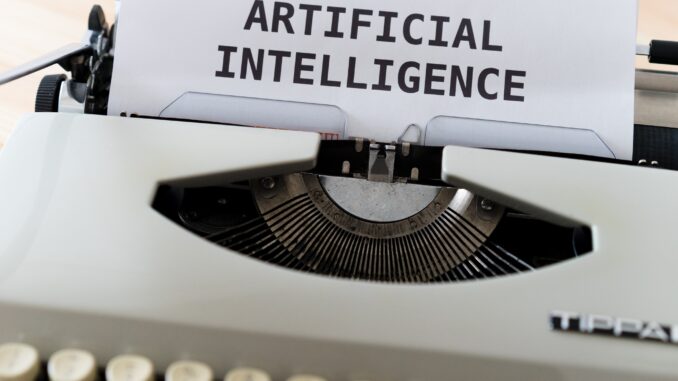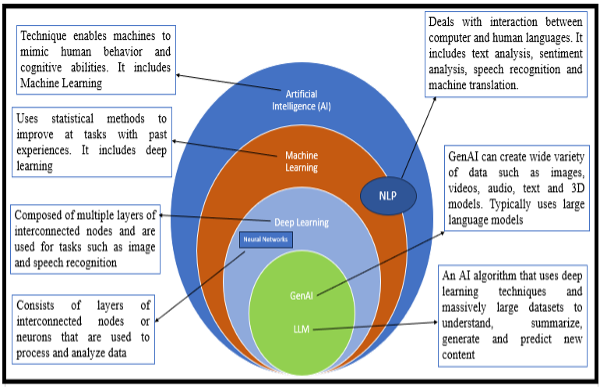
Dr. Gopala Krishna Behara
(Editor’s Note: This is Part 1)
AI Technology is changing the way the world does business. Generative Artificial Intelligence (Generative AI) refers to the use of AI to create new content, like text, images, music, audio, and videos. It can produce a variety of content covering images, video, music, speech, text, software code and product designs. Generative AI helps in faster product development, enhanced customer experience and improved employee productivity.
McKinsey defined Generative AI as Algorithms (such as ChatGPT) that can be used to create new content, including audio, code, images, text, simulations and videos.
Generative AI is powered by foundation models (large AI models) that can perform out-of-the-box tasks including summarization, Q&A, Classification and more.
This play book covers the industry adoption of Generative AI technology, characteristics of Generative AI, Generative AI adoption steps and challenges, Generative AI reference architecture and benefits of Generative AI. It also covers real world Use cases in Generative AI technology adoption.
Industry Adoption of Generative AI
According to Gartner, “Any organization in any industry, especially those with very large amounts of data, can use AI for business value.” Generative AI is primed to make an increasingly strong impact on enterprises over the next five years.
- By 2025, 30% of enterprises will have implemented an AI-augmented development and testing strategy, up from 5% in 2021 – Gartner
- By 2026, generative design AI will automate 60% of the design effort for new websites and mobile apps – Gartner
- By 2027, nearly 15% of new applications will be automatically generated by AI without a human in the loop. This is not happening at all today – Gartner
- According to Accenture’s 2023 Technology Vision report, 97% of global executivesagree that foundation models will enable connections across data types, revolutionizing where and how AI is used.
- Recent CEO surveys show almost 80% of CEOs believe AI is likely to significantly enhance business efficiencies in their organization – Forbes
- Today, an estimated 60% of IT leaders are looking to implement Generative AI – CIO.com
- Generative AI is rated to be the top emerging enterprise technology. 80% believe that it will disrupt their industry and nearly all (93%) think generative AI will provide value to their business – KPMG
- Generative AI coding support can help software engineers develop code 35 to 45 percent faster, refactor code 20 to 30 percent faster, and perform code documentation 45 to 50 percent faster-McKinsey
- 44% of the worker’s core skills are expected to change in the next five years. Training employees to be able to leverage Generative AI is going to be critical – World Economic Forum.
- Companies see AI Training as one of the highest strategic priorities from now until 2027 – Data Bricks
Business Case for Generative AI
Many CXO’s see the IT budget as an area of overspending and are continuously looking for ways to reduce costs and effort.
The ability of Technological advancement to do “More and More with Less and Less until eventually you can do everything with nothing” – R. Buckminster Fuller, Architect, Systems Theorist, Writer, Designer, Inventor, Philosopher and Futurist.
Driving business outcomes with Generative AI requires strategy and collaboration from enterprise teams. The following strategy level questions help to understand about the enterprise readiness for the Generative AI adoption.
- Is there a CXO mandate for Generative AI
- Is there a top management-level charter for Generative AI tied to one or more of the drivers.
- Do enterprise has a published Business Strategy for Generative AI
- How does the Generative AI helps in enhancing existing processes and enterprise strategy
- Who will make the final decision on the Generative AI initiative (business only, business and IT, IT only)
- Is there an internal business case built? If so, at what level
- Is existing MLOps-tech stack and platform licenses fuel Generative AI, or are third-party services required
- Does the workforce possess the skills to use Generative AI, and what are the implications for talent acquisition and upskilling
- What risks emerge when deploying Generative AI and how do these risks impact Generative AI value
- What current and expected laws and regulations concern the use of Generative AI, and are existing governance and MLOps processes sufficient to meet those laws and regulations
- When would the Generative AI initiative start (next 3 months, next 6 months, 1 year+)
Basic AI Types: Key Terms
Artificial Intelligence: It is a technique that enables machines to mimic human behavior and cognitive abilities. It includes Machine Learning.
Machine Learning: It uses statistical methods to improve at tasks with past experiences. It includes deep learning.
Deep Learning: It uses neural networks to train machines to perform tasks. It is composed of multiple layers of interconnected nodes and is used for tasks such as image and speech recognition. It includes Generative AI.
Neural Networks: Machine Learning algorithms that are modeled after the human brain. It consists of layers of interconnected neurons that are used to process and analyze data.
NLP: It deals with interaction between computer and human languages. It includes text analysis, sentiment analysis, speech recognition and machine translation.
Generative AI: It is a set of models that describe what we want, visualizing and generating content to match prompts. Generative AI accelerates ideation, brings vision to life and frees up to spend more time on being creative. It creates a wide variety of data such as images, videos, audio, text and 3D models. Typically uses large language models, example: ChatGPT, OpenAI.
Large Language Model: It is a Generative AI algorithm that uses deep learning techniques and huge datasets to generate and predict new content.

Figure 1: Key AI Terms
Key Characteristics of Generative AI Technology
The following are the key characteristics of Generative AI Technology,
- Text Management: Generative AI can complete a given text in a coherent manner. It can translate text from one language to another. It can summarize text into a shorter and concise form. It can generate text that mimics human writing.
- Contextual Understanding: Generative AI has a strong ability to understand the context.
- Natural Language Processing: It can perform various NLP tasks. Understand and process human language, allowing users to ask questions in a conversational manner.
- Question Answering: Generative AI can answer questions based on the knowledge base.
- Personalization: Generative AI can be fine-tuned for specific use cases.
- Multi-Language Support: Generative AI can perform NLP tasks in multiple languages.
- Advanced Semantic Search: Enables semantic search through Large Volumes of structured and unstructured data, including databases, documents etc. Also, supports auto data indexing using Custom AI/ML based data processing for efficient embedding.
- Content Moderation: Smart content filtering and moderation engine for Query & Response trainable on Enterprise specific data.
- Integration: Can be integrated with various applications/data sources within an organization, including CRM, ERP, and other proprietary systems, to access and analyze data via API.
- Role-based access control: The system can be set up with role-based access control, ensuring that users can only access and query data that they are authorized to view.
- Software coding: Code generation, translation, explanation and verification.
Part 2 will appear Tuesday, October 3.
Acknowledgements
The author would like to thank Santosh Shinde of BTIS, Enterprise Architecture division of HCL Technologies Ltd for giving the required time and support in many ways in bringing this article as part of Architecture Practice efforts.
About Author
Dr. Gopala Krishna Behara is a Enterprise Architect in BTIS Enterprise Architecture division of HCL Technologies Ltd. He has a total of 28 years of IT experience. Reached at gopalakrishna.behara@hcl.com
Disclaimer
The views expressed in this article/presentation are that of authors and HCL does not subscribe to the substance, veracity or truthfulness of the said opinion.
